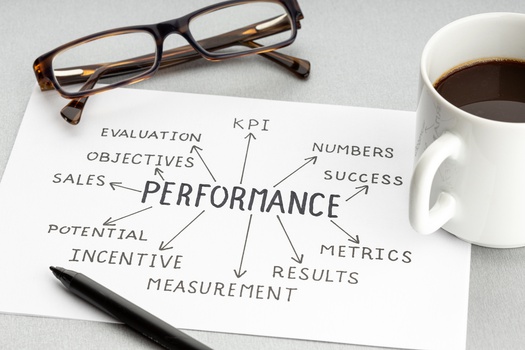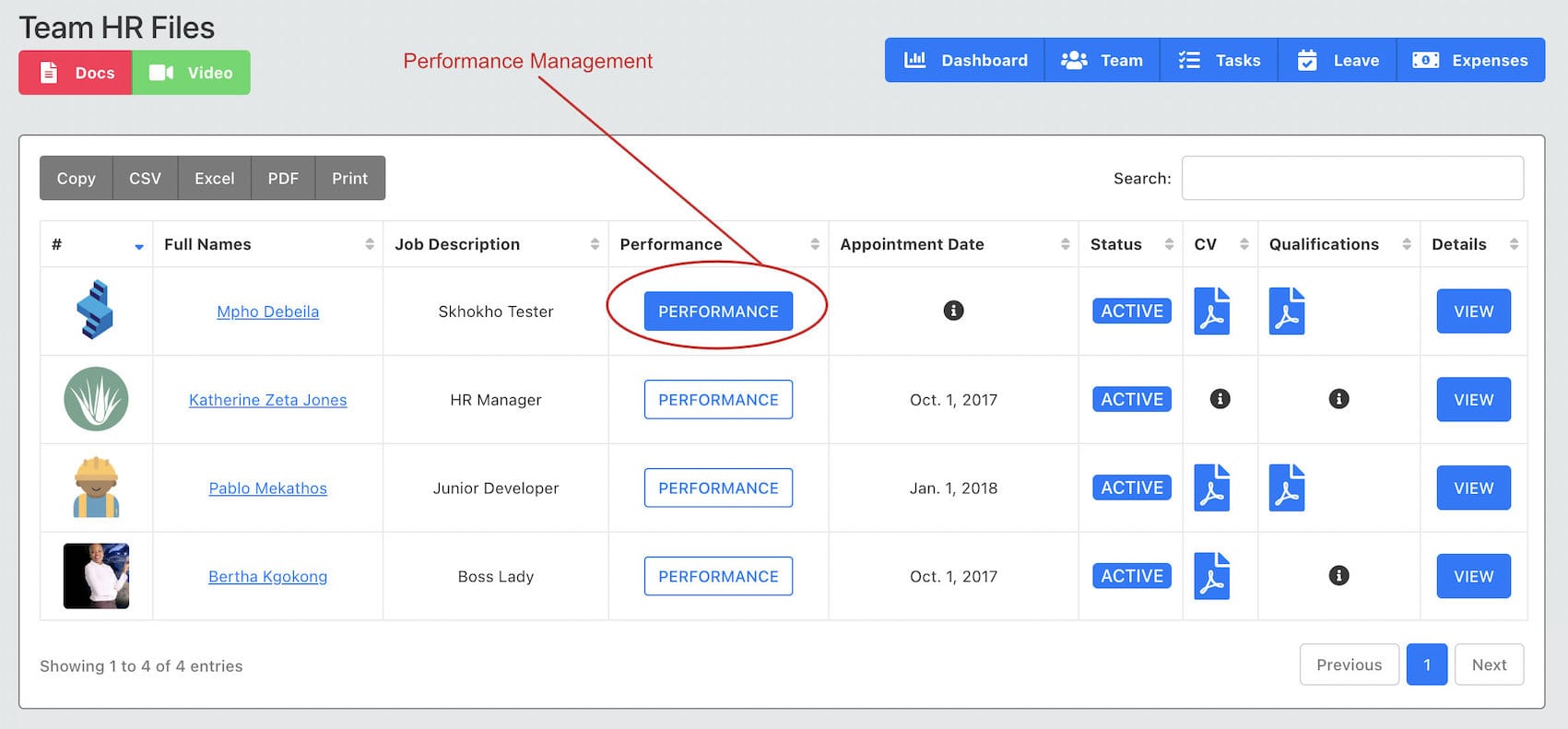The Components Of Performance Management
Performance management is an essential part of helping employees to grow in their careers. We will look at what goes into performance management and the different factors that can be used to help employees to grow.

As a leader in your organisation, it is essential that you manage and develop your entire team to get the best out of them. There are a number of factors which are needed to manage your team. Blog post will focus on the key components of performance management and how we can structure our performance management process.
We will focus on the following topics:
- Defining performance management
- The goals of performance management
- The benefits of performance management
- The key components of performance management
- The challenges of performance management
- Performance management systems
What is performance management?
Performance management is a communication between supervisors and employees that is carried out during the year to plan, control and evaluate the employees performance, objectives, goal progress and overall job performance. Performance Management aims at ensuring organizations' success and preserving a competitive advantage. Performance Management is designed for a positive culture where people and groups take charge of the company and the company's development.

When done effectively, performance management can help improve employee productivity, motivation, and engagement. It can also provide valuable data that can be used to make decisions about staffing, training, and other HR initiatives.
Thus, it is important for organizations to carefully consider their performance management goals and to design and implement their systems in a way that will support those goals.
Goal: The goals of performance management
The goal of performance management is to ensure that employees are meeting their job responsibilities and contributing to the organization's success. To do this, performance management systems typically involve setting clear expectations for employee performance, providing feedback and coaching on progress, and conducting regular performance reviews.
The goal of the performance management system is to enable the interaction between evaluating performance and action. Performance management should never be focused primarily on past events. This is to encourage positive changes.
How performance management helps your business?
There are many ways in which performance management can help your business. Perhaps the most obvious way is that it can help you identify areas where your employees need improvement. By setting clear goals and expectations, and then measuring and assessing employee performance against those goals, you can identify specific areas where employees need improvement.
Additionally, performance management can help you identify and reward high-performing employees, which can help motivate other employees to improve their own performance. Moreover, effective performance management can help improve communication between employees and managers, and can help create a more positive and productive work environment overall.

The benefits of performance management
The benefits of performance management include improved employee performance, increased accountability, and improved communication.
Improved employee performance is the most obvious benefit of performance management. By setting performance goals and providing feedback, organizations can help employees focus on their work and improve their performance. Additionally, performance management can help identify employees who are not meeting expectations, so that they can be given additional training or coaching.

Increased accountability is another benefit of performance management. When employees know that their performance will be regularly evaluated, they are more likely to be accountable for their work. This can lead to improved performance, as well as increased transparency and communication within the organization.
Improved communication is another benefit of performance management. The process of setting performance goals and providing feedback can help ensure that employees and managers are on the same page regarding expectations and performance. Additionally, regular performance reviews can help identify areas where employees need more support or training.
Overall, by setting performance goals and providing feedback, organizations can help employees focus on their work and improve their performance. Additionally, performance management can help identify employees who are not meeting expectations, so that they can be given additional training or coaching.
The key components of performance management
Performance management is not just about having a better boss or employee. It is about the execution of goals, aligning incentives and developing a culture of accountability. Here are the 9 components of performance management, how they work and how they will help your business.
1. Clear and specific goals: What is the point of having a performance management system if you don't have goals? Setting goals, aligning incentives and having a culture of accountability is what performance management is all about. Employees need to know what is expected of them in order to meet performance expectations. Goals should be specific, measurable, achievable, relevant, and time-bound (SMART).
2. Regular feedback: Feedback is essential for employees to track their progress and adjust their performance as needed. Feedback should be given frequently, and it should be both positive/negative and constructive.

3. Performance reviews: Performance reviews provide an opportunity for employees and managers to discuss progress, identify areas for improvement, and set goals for the future. Reviews should be conducted regularly, and they should be based on objective data and feedback.
4. Training and development: Employees need the skills and knowledge to perform their jobs effectively. Organizations should provide training and development opportunities that are tailored to the needs of their workforce.
The challenges of performance management
The main challenge of performance management is setting and achieving objectives that are realistic and attainable. This can be difficult to do because it requires a clear understanding of an individual's strengths and weaknesses, as well as a clear understanding of the organization's goals. Additionally, performance management can be difficult to implement effectively if there is not buy-in from all levels of the organization.
Another challenge of performance management is ensuring that the system is fair and objective. This can be difficult to do because it is often based on subjective measures, such as reviews from supervisors. Additionally, performance management can be difficult to maintain over time, as it requires ongoing effort and commitment from all stakeholders.
Despite these challenges, performance management is a critical tool for organizations to use in order to improve employee performance and achieve organizational goals.

Best 3 Performance management system
There are a few key components that are essential for an effective performance management system:
- Communication: Performance management systems should be designed and implemented in a way that promotes communication between employees and managers. There should be opportunities for employees to provide input and feedback throughout the process.
- Fairness and consistency: Performance management systems should be fair and consistent in the way they are applied to employees. Employees should be held to the same standards, and they should be given the same opportunities to improve their performance.
- Flexibility: Performance management systems should be flexible enough to meet the needs of the organization and the employees. They should be able to adapt as the workforce and the business goals change over time.
#1. Skhokho
Skhokho Business Management System allows Managers to create performance reviews for their team within the manager app. This software supports all 3 components mentioned above. The manager app also allows you as a manager to do the following:
- Manage your team, invite new members and change permissions members in your team have.
- View all the tasks in the department, assign new tasks to team members, delete tasks and move tasks around the board
- View employee HR records (limited view)
- View leave applications, approve or reject leave submitted by team members

For more information on how to use the Skhokho Manager app for performance management system, visit this page: https://skhokho.io/documentation/manager/performance.html#create-a-performance-review. To register on Skhokho and use the 14 day free trial, click here.
#2. Trakstar - Best for deep customization options
#3. ClearCompany - Best for simplified, automated HR workflows that are easy to use
Conclusion
As you are working to improve your performance management program, here are a couple of things to keep in mind. First, some things to know about performance management software: 1) It's designed to improve your business processes. 2) It's not a substitute for managing performance. 3) It's not hard to use or maintain. 4) It can help you manage your performance management program. 5) It's flexible enough to work for small businesses and large corporations alike. 6) It's affordable.









